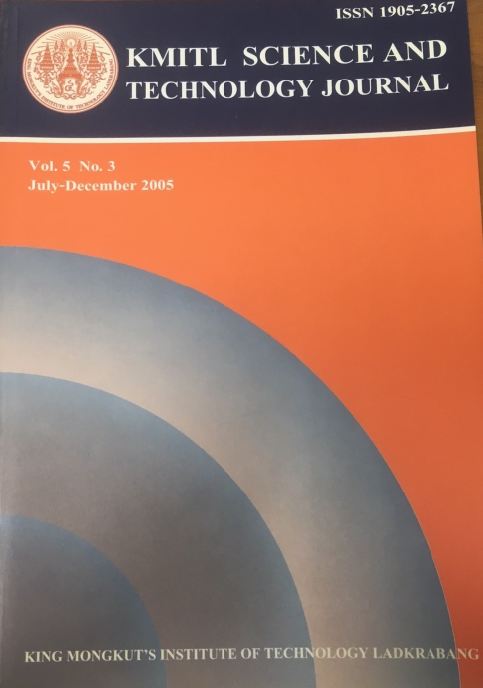Light Detection and Ranging (LIDAR) Data Compression
Main Article Content
Abstract
Light Detection and Ranging (LIDAR) data compression has been an active research field for last few years because of its large storage size. When LIDAR has large number of data points, the surface generation represented by interpolation methods may be inefficient in both storage and computational requirements. This paper presents a newly developed compression scheme for the LIDAR data based on second generation wavelet. A new interpolation wavelet filter has been applied in two steps, namely splitting and elevation. In the splitting step, a triangle has been divided into several sub-triangles and the elevation step has been used to ‘modify’ the point values (point coordinates for geometry) after the splitting. Then, this data set is compressed at the desired locations by using second generation wavelets. The quality of geographical surface representation after using proposed technique is compared with the original LIDAR data. The results show that this method can be used for significant reduction of data set.
Keywords: Light Detection and Ranging (LIDAR), Delaunay triangulation, Triangulated irregular network (TIN), Geographical information system, Lifting scheme, Second generation wavelet
Corresponding author: E-mail: biswajeet@mailcity.com
Article Details
Copyright Transfer Statement
The copyright of this article is transferred to Current Applied Science and Technology journal with effect if and when the article is accepted for publication. The copyright transfer covers the exclusive right to reproduce and distribute the article, including reprints, translations, photographic reproductions, electronic form (offline, online) or any other reproductions of similar nature.
The author warrants that this contribution is original and that he/she has full power to make this grant. The author signs for and accepts responsibility for releasing this material on behalf of any and all co-authors.
Here is the link for download: Copyright transfer form.pdf
References
[2] Demaret, L., Dyn, N., Floater, M.S. and Iske, A. 2004 Adaptive Thinning for Terrain Modelling and Image Compression. In: Dodgson, N.A., Floater, M.S. and Sabin, M.A. Eds. Advances in Multiresolution for Geometric Modelling. Springer-Verlag, Heidelberg, pp. 321-340.
[3] Lawson, C.L. 1972 Generation of a Triangular Grid with Application to Contour Plotting. California Institute of Technology, Jet Pollution Laboratory, Technical Memorandum No.299
[4] Sibson, R. 1978 Locally Equiangular Triangulations, Computer Jour., 21(3), 243-245.
[5] Kao, T., Mount, D.M. and Saalfeld, A. 1991 Dynamic Maintenance of Delaunay Triangulations. Proc. Auto-Carto, 10, Baltimore, Maryland, 219-233.
[6] Puppo, E., Davis, L., DeMenthon, D. and Teng, Y.A. 1992 Parallel Terrain Triangulation. Proc. 5th Intern. Symposium on Spatial Data Handling, V.2, Charleston, South Carolina, pp.632-641.
[7] Tsai, V.J.D. and Vonderohe, A.P. 1991 A Generalized Algorithm for the Construction of Delaunay Triangulations in Euclidean n-space. Proc. GIS/LIS ]91, V.2, Atlanta, Georgia, pp. 562-571.
[8] Tsai, V.J.D. 1993 Fast Topological Construction of Delaunay Triangulations and Voronoi Diagrams, Computer & Geosciences, 19(10), 1463-1474.
[9] Evans, W., Kirkpatrick, D. and Townsend, G. 2001 Righty-Triangulated Irregular Networks, Algorithmica. Special Issue on Algorithms for Geographical Information Systems, 30(2), 264-286.
[10] Abásolo, M.J., Blat, J. and de Giusti, A. 2000 A Hierarchial Triangulation for Multiresolution Terrain Models, The Journal of Computer Science & Technology (JCS&T), 1, 3.
[11] Fortune, S. 1992 Voronoi Diagrams and Delaunay Triangulations. In: Hwang, F.K. and Du, D.Z. Eds. Computing in Euclidean Geometry. World Scientific.
[12] Kiema, J.B.K. and Bähr, H.-P. 2001 Wavelet Compression and the Automatic Classification of Urban Environments using High Resolution Multispectral Imagery and Laser Scanning Data, Geoinformatics, 5, 165-179.
[13] Wu, J. and Amaratunga, K. 2003 Wavelet Triangulated Irregular Networks, International Journal of Geographical Science, 17(3), 273-289.
[14] Dyn, N., Levin, D. and Gregory, J.A. 1990 A Butterfly Subdivision Scheme for Surface Interpolation with Tension Control, ACM Transaction on Graphics, 9, 160-169.
[15] Cohen, A. 2001 Applied and Computational Aspects of Nonlinear Wavelet Approximation. In: Dyn, N., Leviatan, D., Levin, D. and Pinkus, A. Eds. Multivariate Approximation and Applications. Cambridge University Press, Cambridge, pp. 188-212.
[16] Mallat, S. 1989 A Theory of Multiresolution Signal Decomposition: The Wavelet Representation, IEEE Transaction on Pattern Analysis and Machine Intelligence, 11, 674-693.
[17] Sweldens, W. 1994 Construction and Applications of Wavelets in Numerical Analysis.. Unpublished PhD. Thesis, Dept. of Computer Science, Katholieke Universiti Leuven, Belgium.
[18] Sweldens, W. 1996 The Lifting Scheme: A Custom-design Construction of Biorthogonal Wavelets, Applied Computer Harmonic Analysis, 3(2), 186-200.


